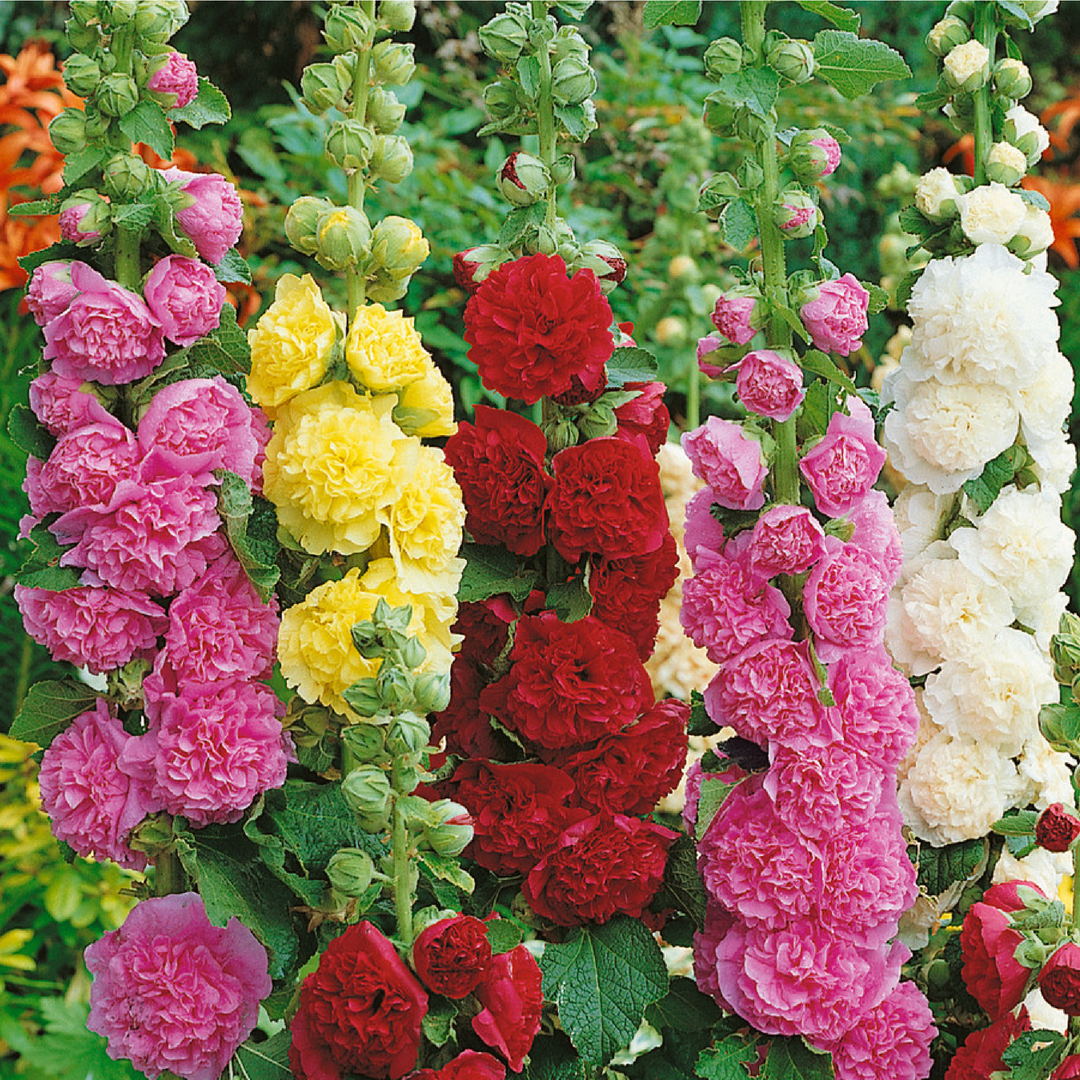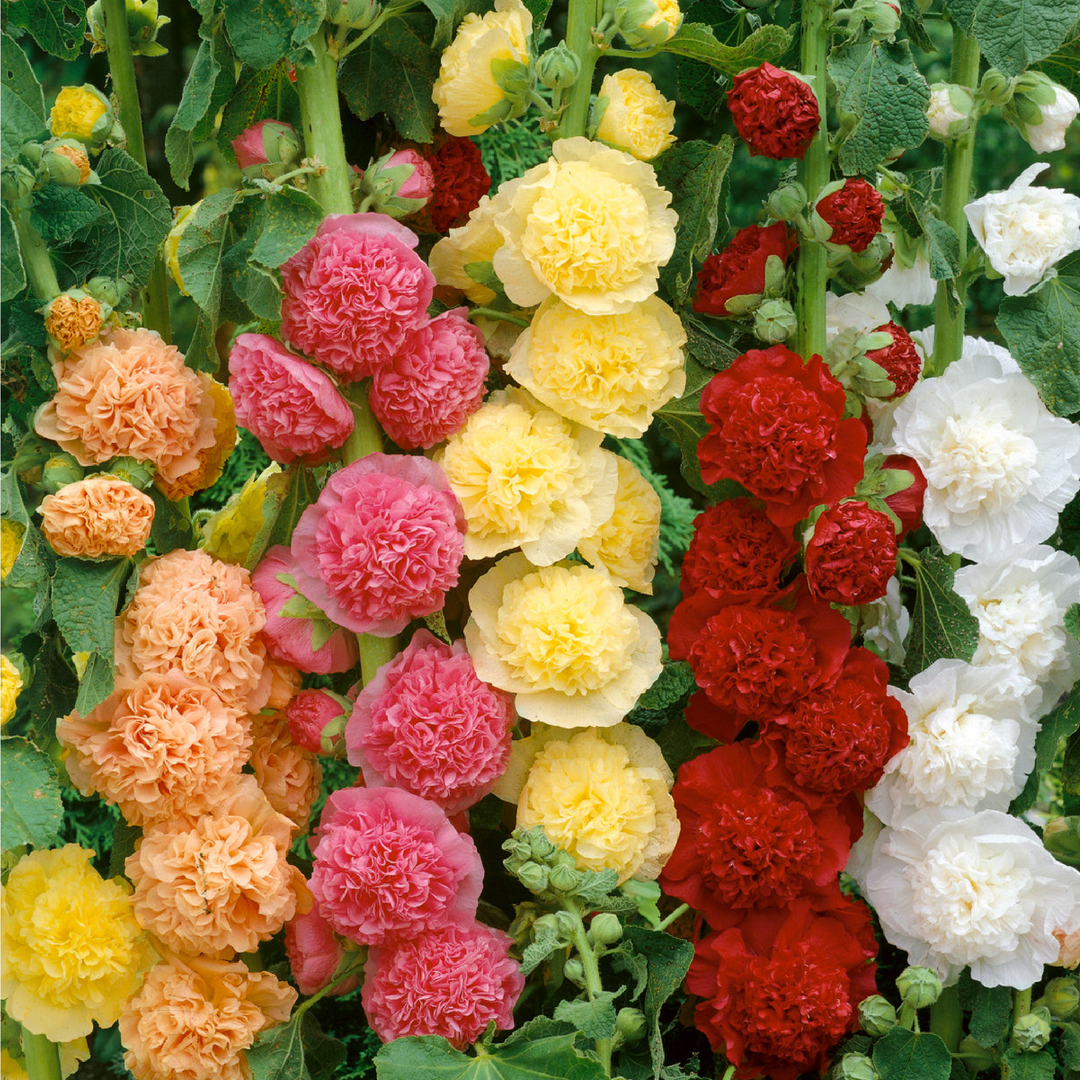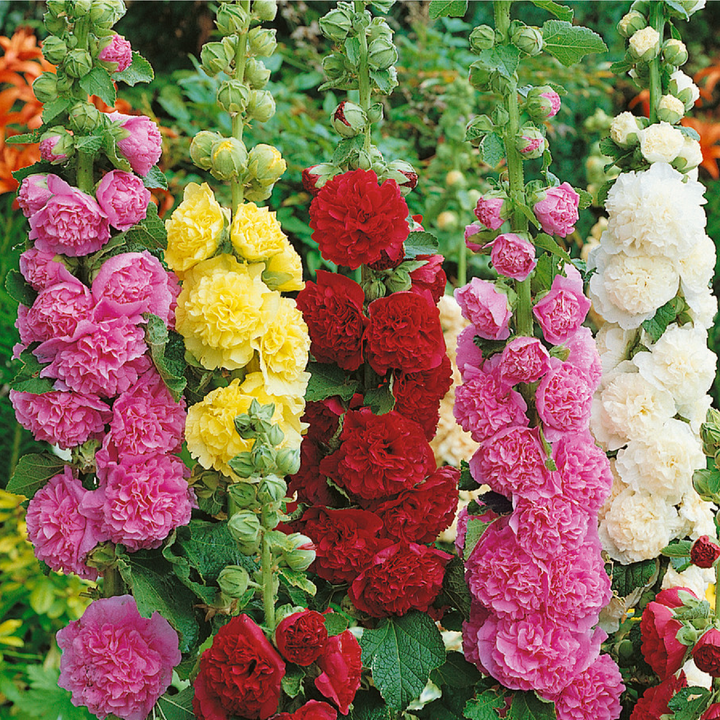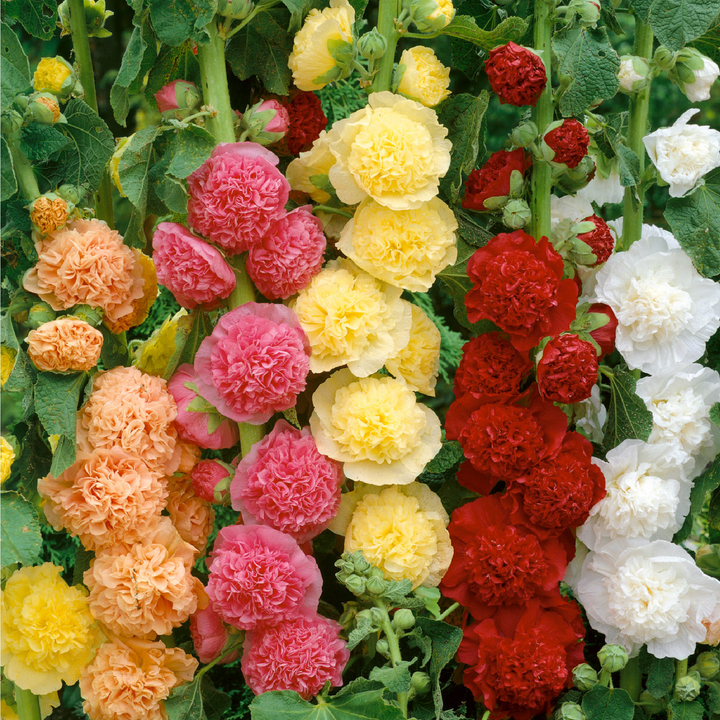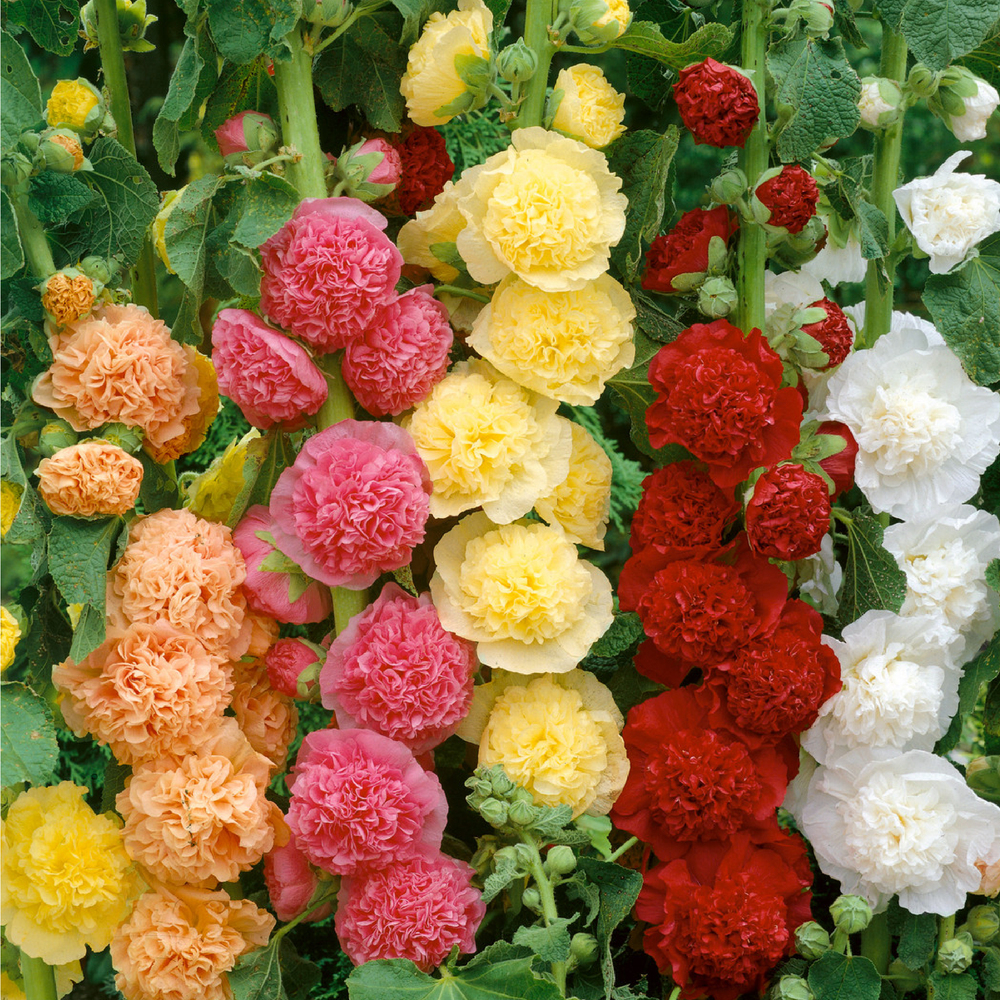بذور الخطميه بذور زهور الخطميه
- شحن مجاني إلى جميع أنحاء العالم
- مخزون منخفض - 10 عناصر متبقية
- تم طلبها مسبقًا، سيتم الشحن قريبًا
1. زراعة بذور الخبازى
-
اختيار البذور :
تتوافر نباتات الخبازة بألوان وأنواع مختلفة، بما في ذلك الأنواع الثنائية الحول والدائمة. اختر البذور بناءً على تفضيلاتك للون الزهرة ودورة النمو (تزهر النباتات الثنائية الحول في السنة الثانية، بينما تزهر النباتات المعمرة سنويًا بعد السنة الأولى). -
إعداد التربة :
تنمو نباتات الخبازة في التربة الغنية جيدة التصريف. وتفضل التربة الحمضية قليلاً إلى المحايدة بدرجة حموضة تتراوح بين 6.0 و7.0. إذا كانت تربتك فقيرة، فقم بتعديلها بالسماد أو المواد العضوية قبل الزراعة. -
زراعة بذور الخبازى :
- قم بزراعة بذور الخبازة مباشرة في الحديقة بعد الصقيع الأخير، حيث لا يتم زرعها بشكل جيد بسبب جذورها المحورية الطويلة.
- قم بزراعة البذور على عمق حوالي 1/4 بوصة، مع ترك مسافة 12-18 بوصة بينها للسماح بدوران الهواء المناسب ومنع الأمراض.
- تستغرق بذور الخبازة من 10 إلى 14 يومًا لتنبت، حسب الظروف. قم بتغطيتها بخفة بالتربة، ثم اضغط عليها برفق، ثم اسقِها برفق.
-
الإنبات :
حافظ على رطوبة التربة، ويجب أن تنبت بذور الخبازة خلال أسبوعين إلى ثلاثة أسابيع. بمجرد ظهور الشتلات، قم بتخفيفها لمنع الازدحام.
2. العناية بالخطمي
-
ضوء الشمس :
تحتاج نباتات الخبازة إلى أشعة الشمس الكاملة لتزدهر. فهي تحتاج إلى ما لا يقل عن 6-8 ساعات من أشعة الشمس المباشرة يوميًا. وقد يؤدي نقص أشعة الشمس إلى ضعف النباتات وقلة أزهارها. -
المراهنة :
تنمو نباتات الخبازة طويلة، وغالبًا ما يصل ارتفاعها إلى 6-8 أقدام، لذا قد تتطلب الدعم، خاصة في المناطق العاصفة. استخدم أوتاد الحديقة أو اربط السيقان برفق بسياج أو تعريشة للدعم. -
التقليم وإزالة الأزهار الذابلة :
إن إزالة الأزهار الذابلة يشجع على زيادة الإزهار ويمنع النبات من الإزهار بشكل مفرط. بمجرد اكتمال الإزهار، يمكنك قطع النبات حتى مستوى الأرض في أواخر الخريف أو أوائل الشتاء. -
التسميد :
قم بتسميد نباتات الخطمي بسماد متوازن (10-10-10) مرة واحدة شهريًا أثناء موسم النمو. تجنب الإفراط في استخدام النيتروجين، لأنه قد يؤدي إلى زيادة عدد الأوراق وقلة عدد الأزهار. -
إدارة الأمراض :
تتعرض نباتات الخبازى للإصابة بالصدأ، وهو مرض فطري يسبب ظهور بقع برتقالية أو بنية اللون على الأوراق. تأكد من وجود مسافات مناسبة لتدوير الهواء، وتجنب الري بالرش، وإزالة أي أوراق متضررة للتعامل مع الصدأ.
3. سقي الخبازى
-
الري الأولي :
بعد زراعة بذور الخبازة، اسقها قليلاً للحفاظ على رطوبة التربة ولكن ليس تشبعها بالمياه. تفضل الخبازة مستوى ثابتًا من الرطوبة، لكنها لا تحب التربة المبللة. -
الري المنتظم :
بمجرد إنشاء نباتات الخطمي، يجب ريها بانتظام، وخاصة خلال فترات الجفاف. اسقها بعمق، حوالي 1-2 بوصة من الماء أسبوعيًا، مع التأكد من أن التربة رطبة حتى عمق 6 بوصات على الأقل. -
نصائح الري :
- الري عند قاعدة النبات لتجنب تبليل أوراق الشجر، الأمر الذي قد يشجع الأمراض الفطرية مثل الصدأ.
- قم بتغطية التربة حول قاعدة النبات للمساعدة في الاحتفاظ بالرطوبة والحفاظ على الجذور باردة.
4. زراعة الخبازى في الأصص
-
اختيار الوعاء :
تتمتع نباتات الخبازة بجذور محورية طويلة، لذا فهي تحتاج إلى حاويات عميقة للنمو السليم. اختر وعاءً بعمق 12 إلى 18 بوصة على الأقل وواسعًا بما يكفي لدعم نموها الطويل. -
تربة للاصص :
استخدم مزيجًا جيدًا من التربة غنيًا بالمواد العضوية. اخلطه بالسماد أو الأسمدة بطيئة الإطلاق لمنح النباتات دفعة من العناصر الغذائية. -
الزراعة في الأواني :
- املأ الوعاء بخليط الزرع، مع ترك مساحة تبلغ حوالي 2 بوصة من الأعلى.
- قم بزراعة البذور على عمق حوالي 1/4 بوصة، ثم ضعها في أوعية أكبر حجمًا على مسافات متباعدة.
- ضع الوعاء في مكان مشمس حيث سيتلقى النبات ما لا يقل عن 6-8 ساعات من ضوء الشمس.
-
العناية بالخبازى المزروعة في الأصص :
تحتاج نباتات الخبازة المزروعة في الأصص إلى الري بشكل متكرر، حيث تجف الأصص بشكل أسرع من تربة الحديقة. اسقها جيدًا عندما تشعر أن الجزء العلوي من التربة جاف. ضع في اعتبارك تثبيت النباتات في الأصص للحصول على دعم إضافي.
5. درجة الحرارة والمناخ لنبات الخبازى
-
درجة الحرارة المثالية :
تنمو نباتات الخبازة في درجات حرارة تتراوح بين 60 درجة فهرنهايت و85 درجة فهرنهايت (15 درجة مئوية إلى 29 درجة مئوية). وتفضل المناخات المعتدلة وهي الأنسب لمناطق صلابة وزارة الزراعة الأمريكية 3-9. -
الطقس البارد :
تتحمل نباتات الخبازة الصقيع ويمكنها البقاء على قيد الحياة في فصل الشتاء في معظم المناخات. في المناطق الأكثر برودة، قم بتغطية قاعدة النبات بكثافة في أواخر الخريف لحماية الجذور خلال أشهر الشتاء. -
الطقس الحار :
رغم أن نباتات الخبازة تتحمل الحرارة، إلا أنها قد تعاني في المناخات شديدة الحرارة. وفي المناطق التي تشهد صيفًا شديد الحرارة، فإن توفير بعض الظل في فترة ما بعد الظهيرة قد يساعد في منع النباتات من الذبول. -
رطوبة :
يمكن أن تؤدي الرطوبة العالية إلى ظهور الصدأ وغيره من الأمراض الفطرية. لمكافحة ذلك، تأكد من وجود مسافات مناسبة لدوران الهواء وتجنب تبليل الأوراق أثناء الري.
إذا كنت تبحث عن مجموعة واسعة من النباتات وإكسسوارات الحدائق، فلا تتردد في النقر هنا.
استخدم علامات التبويب القابلة للطي للحصول على معلومات أكثر تفصيلاً تساعد العملاء على اتخاذ قرار الشراء.
على سبيل المثال: سياسات الشحن والإرجاع، وأدلة المقاسات، وغيرها من الأسئلة الشائعة.


